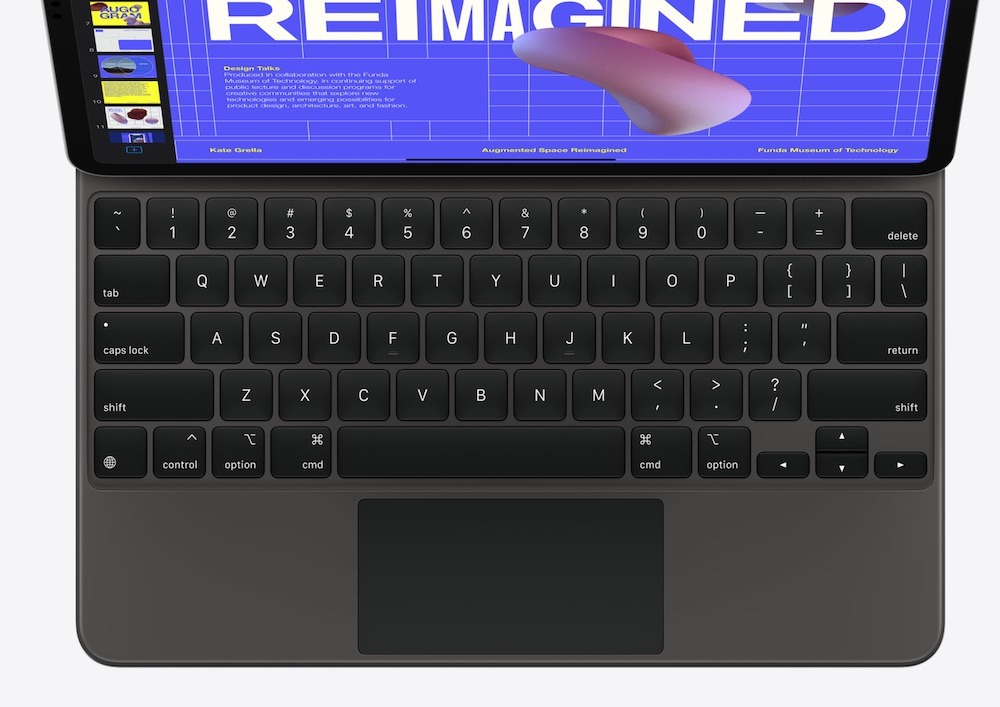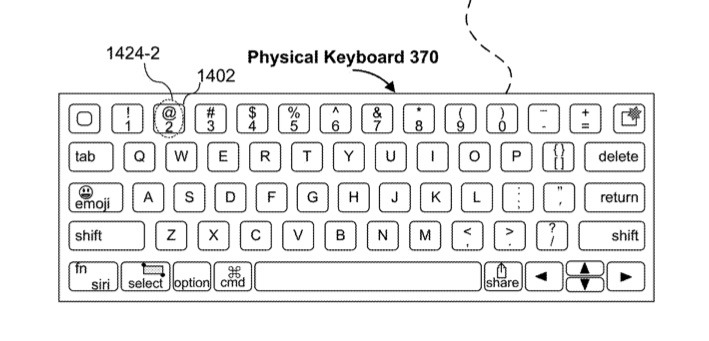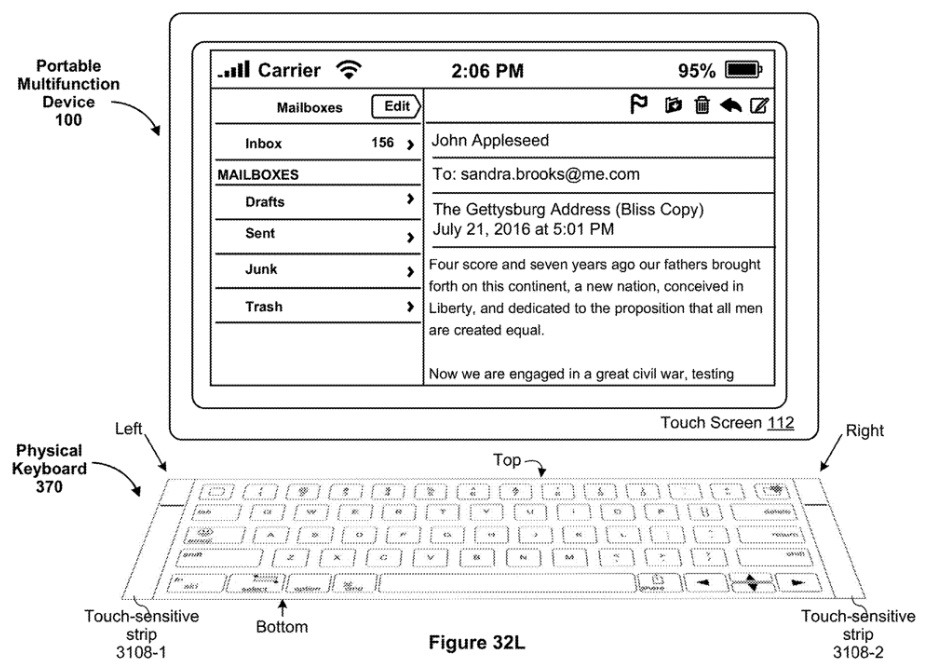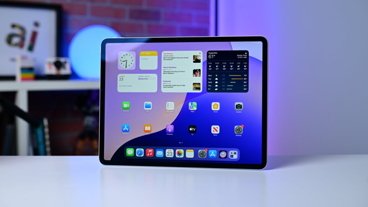Apple is developing new keyboard input methods, such as multi-function keys and touch-strips, that could address the shortcomings of typing and navigating on smaller-sized devices.
Devices like the iPad Pro have a range of user input methods, such as a multi-touch display, external keyboard cases, and since iPadOS 13.4, trackpad support for accessories like the Magic Keyboard. On smaller portable devices, Apple notes that the size of UX methods "remains an issue."
To help address those issues, Apple has filed a patent application titled "Portable Computing Input Devices and Methods" that offers a range of ideas to implement better control mechanisms and abilities in physical and virtual keyboards.
According to Apple's patent, there's a need for a keyboard that "introduces new multi-functional keys to replace less frequently used keys found on conventional full-size keyboards."
One example of that could be a "notification key," which could register contact sensitivity and perform actions based on how hard a user presses it. It could also determine which action to take depending on context — such as if or when a notification is available.
More specifically in this case, pressing and holding on this key would bring up the notification center. Once a user stops pressing on it, the notification center would disappear. Other possible uses for "multi-functional keys" include dedicated keys for bringing up the share sheet or editing text.
The patent also describes ways of implementing new capabilities into existing keys, such as integrating intensity sensors below the arrow keys and allowing for "improved keyboard arrow key scrolling" on devices that lack a touchscreen. This type of scrolling and inertia effect would be "intuitive," Apple says, likening it to a user taking their foot off the accelerator pedal on a car.
Apple also proposes that some trackpad functionality could be replaced by touch-sensitive strips situated to the left and right of a physical keyboard. The patent essentially describes these touch-sensitive strips are elongated trackpads that can allow users to scroll through content. They'd also be multi-functional, and could perform actions like bringing up the notification center if a specific gesture is performed.
Other portions of the patent detail 3D Touch-like, gesture-based input methods on touchscreen keyboards, such as light pressing, deep pressing, pinching and press-and-hold.
The inventors listed on the patent are Julian Missig, Linda L. Dong, Jeffrey T. Bernstein and Morgan H. Winer, all of whom have worked on numerous previous Apple patents. Bernstein, for example, was listed as an inventor for a patent on a "Force Touch" keyboard for Mac. Missig was named on a patent for location-based authentication settings, among others.
Apple files many patents every week, and there's no guarantee that the technology described in them will ever be used in a finished product.
 Mike Peterson
Mike Peterson






-xl-m.jpg)


-m.jpg)






 Thomas Sibilly
Thomas Sibilly
 Wesley Hilliard
Wesley Hilliard
 Christine McKee
Christine McKee
 Amber Neely
Amber Neely
 William Gallagher
William Gallagher
 Malcolm Owen
Malcolm Owen

 Mike Wuerthele
Mike Wuerthele








5 Comments
How about some focus on the standalone Magic Keyboard (the one without the keypad)? Where's space grey? All the other Apple accessories are available in white or grey but not the MK. And how about adding Touch ID, or even the Touch Bar so that those of us using our MacBook Pro's in clamshell mode can still take advantage of fingerprint login, Apple Pay and the Touch Bar shortcuts so many developers have spent time and effort providing?
I know the diagrams are just there to support the patent but changing the Caps Lock to Emoji and not adding an Escape key would be problematic for me. Now that you can change meta keys for various functions in iPadOS, not having a physical Escape key would make me crazy. I remap the useless Caps Lock key to Escape and I’m happy. Either add an Escape key or give me a special key that I can reassign for my own needs and problem solved.
Edit: And ditch the large left and right arrow keys and keep the inverted-T arrow keys. I’m not fanatical about the inverted-T but it is better.
Why don't all the top row keys be physical keys but pressing say the Option key, the numbers on the keys change to display the function keys, so the key is, in essence, a mini displays (in simplistic terms), so the key can change to be any character. By default they top row of keys are numbers, pressing the Option key turns the keys to display the characters, pressing Control key changes them to display the function keys and so on. Its not too dissimilar to the Touch Bar on the MacBook Pro but instead they are physical keys which people are so used to whilst using up less space that a Touch Bar would introduce.